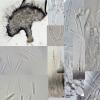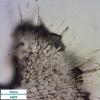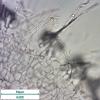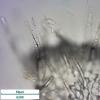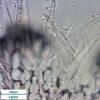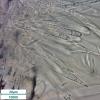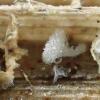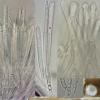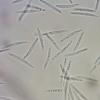
11-06-2021 09:25
Juuso ÄikäsYesterday I stumbled upon a group of Hyaloscypha f

31-05-2021 19:40
 Riet van Oosten
Riet van Oosten
Hello, Found by Laurens van der Linde (May 2021,

08-06-2021 18:16
Aouali SouhilaHi,I lately studied P. nigra pine needles sufferin

09-06-2021 03:07
Zuidland PeterHi all,I found this yesterday and I think it is La

08-06-2021 10:17
Juuso ÄikäsThere were plenty of these Mollisias growing on de
I don't quite know what I should make of this. Suggestions are welcome!



However, on another piece of Typha I found another Lachnum with more typical hairs. I think it could be Lachnum schoenoplecti even though it is not a perfect match with any of the three descriptions I could locate. No very big differences though. The spores are 15.3-20.6 × 1.8-2.3, asci 45-66 × 4.1-5.4 and the parafyses are rather narrow 69-94 × 2.8-3.8 µm. The hairs are up to at least 80 long and up 6 wide at the capitulum, with a few septa. New for me if I am right.

